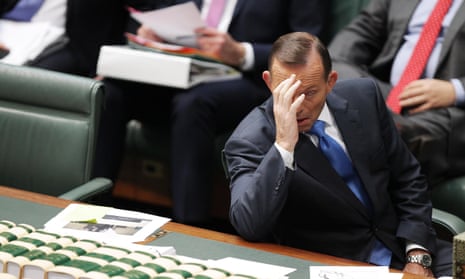In less than two years in office, the Abbott government has added almost $100bn to the level of Commonwealth government debt. This is a 35% increase from the $273bn level of gross government debt at the time of the September 2013 election. This increase flies in the face of the Coalition’s pledge prior to the election – and occasionally since – of reducing debt and at some stage, paying it off.
By the time the next election is held, most likely in the latter part of 2016, the Budget papers indicate the Abbott government will have increased government debt by around $150bn in its three years in power and three years of implementing its economic policy objectives.
The current debt binge is despite a generally positive economic environment, with growth in Australia’s major trading partners estimated by the Reserve Bank of Australia to be robust in the whole period between 2014 and 2016. Helping this positive backdrop is increasing evidence that the industrialised economies are gaining some positive momentum as they emerge from the malaise of the global recession sparked by the banking and financial crisis.
To be sure, there are some important constraints on the Australian economy – commodity prices have fallen sharply and the mining investment boom is in sharp retreat. These significant negative factors have, it must be noted, been offset to a large extent by a significant weakening in the Australian dollar exchange rate and super-stimulatory monetary policy settings from the RBA, which has set the official interest rate at just 2%, a record low.
The escalation in debt owes more to some profligate policy actions from the government.
Repealing the legislation for the carbon pricing mechanism and the mining tax have left a significant hole in revenue, which would have lowered the budget deficit and capped the rise in government debt.
That said, the effect of ongoing economic growth over the next three years will increase government revenue by $17bn in 2014-15, $20.7bn in 2015-16 and $24.5bn in 2016-17.
The bigger influence on the debt blowout is, as the budget papers highlight, a surge in government spending. In the last full year of the previous government, 2012-13, real government spending fell 3.2% to 24.1% of GDP.
Policy changes after the election of the Abbott government have seen government spending rise 7.8% in real terms in 2013-14 and it is forecast in the budget to increase in every year thereafter. In 2014-15 and 2015-16, government spending will be 25.9% of GDP, a quite stunning 1.8 percentage points higher than the level in the last full year of the previous government. In current dollar terms, that spending surge is equivalent to around $30bn a year.
Had the Abbott government simply held government spending to the 2012-13 level, the budget was poised to return to surplus in 2016-17, as outlined in the pre-election fiscal outlook, and government debt would be approximately $45bn lower than it is today.
It is important to note, that even with the surge in the level of debt, there are few if any serious near-term risks to Australia’s triple-A credit rating from the three major ratings agencies. Which merely highlights the fact that Australia did not have a debt problem before the election, and does not now.
There are a number of issues that result from these trends.
Perhaps most importantly, the Coalition’s debt and deficit rhetoric is factually flawed and unfortunately is rarely scrutinised by the media and other commentators whenever it is raised as an issue by which to judge the performance of the previous government.
There is no doubt the debt issue had an impact on the electorate when it cast its vote, even though the Coalition was embarrassingly wrong on the issue.
It is also relevant to note the abject failure of the Abbott government to act on its concerns, however misguided they are, to halt the rise in debt.
The Abbott government has not only given up on debt and deficit reduction, but has done a U-turn that has a framework of large deficits and rising debt as it strives to buy favour with the electorate. It is extraordinary that very few people have noticed, notwithstanding the $2bn of new debt the government has accumulated each and every week since it was elected.

